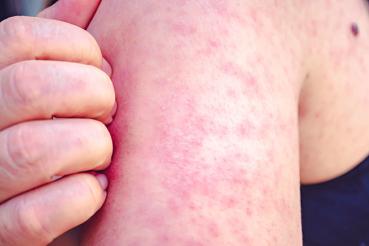While the most common injuries in childhood sports are scrapes, bruises, joint sprains, muscle strains, and bone injuries, some of the more serious injuries can involve the head and face. That's why it's so important to protect these potentially vulnerable areas.
"Injury to the head can be very serious, even life-threatening," says Julia Bruene, MD, a sports medicine physician at Rush.
"A concussion is a prime example of this," Bruene explains. "In sports, the seriousness of a head injury is often downplayed by calling it a 'dinger' or 'getting your bell rung.' But, any suspected concussion should be taken seriously and be evaluated by a health professional, such as an athletic trainer or physician, immediately."
The 411 on concussion
A concussion is the violent shaking of the brain within the skull. "This can happen in any sport, even sports you don't think of as being high-impact. You might get hit hard in the head with a ball, run into another player or collide with the ground," Bruene says.
Anyone who's had a concussion should avoid any more blows to the head and definitely shouldn't play sports until the brain has had time to heal. The bottom line is no athlete who is still symptomatic from a concussion should return to play.
"Care needs to be taken to avoid a second concussion while the brain is repairing itself from the initial injury," says Bruene. "The athlete has the potential to suffer severe damage with the second concussion if the brain hasn't fully recovered. This 'second impact syndrome' is usually universally fatal."
Watch closely for symptoms of a concussion, which may not appear right away.
Protecting the head
- Wear a hard, well-fitting helmet for baseball and softball
- All batters should wear a single or double ear-flap helmet, and catchers should wear a catcher's helmet.
- Little league batters should consider a helmet with a polycarbonate face shield.
- Little league-aged athletes should wear a well-fitting hard helmet for the duration of the game, not just while batting.
- Wear a well-fitted helmet at all times for football.
- Kids and adolescents should avoid "heading" the ball in soccer. And even teenagers and adults should try to avoid headers as much as possible.
Protecting the eyes
Baseball is the leading cause of sports-related eye injuries in children, and the highest incidence occurs in children 5 to 14 years of age. But all athletes are vulnerable to eye injuries.
- Any athlete with less than 20/40 vision in either eye needs to take extra care and wear shatter-proof polycarbonate lenses for all games and practices.
- Athletes who wear glasses needs to either wear sports goggles or have some shatter-proof protective covering for their glasses.
- Any time there's injury to the eye where vision is affected, the eye should be evaluated by someone with medical expertise.
Protecting the teeth
- A mouth guard should be used for all contact sports such as football, rugby and lacrosse.
In sports, the seriousness of a head injury is often downplayed by calling it a 'dinger' or 'getting your bell rung.' But, any suspected concussion should be evaluated by a health professional immediately.
Other activities requiring protection
- Helmets should always be worn for roller skating, rollerblading or skateboarding, or when riding bikes, scooters, Segways or hover boards.
- Helmets should be properly fitted and snug.
- "Parents should support wearing a helmet and start the training as young as possible, about three years old," Bruene says.
- Adults should set a good example by wearing helmets themselves.
"My goal is for athletes to stay healthy and stay in their sports," says Bruene. "Following these safety tips will help them avoid serious injuries while having they're competing."




